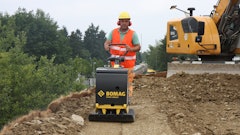
Manufacturers of plate compactors say the machine is a simple piece of equipment that experiences breakdowns in two main areas: the engine and the belts. So preventive maintenance on those key areas will lead to effective and efficient compaction all summer.
Daily and monthly checks
Peter Price, product manager, Bomag Light Equipment, says that for plates compacting dirt, wash the plate each day because when excess dirt and debris are removed, hidden maintenance issues may become visible.
"Don't focus the pressure washer directly on sensitive areas, such as electrical components, as the excess force can cause damage," he says. "Avoid using a steam pressure washer since steam can penetrate seals that are normally watertight."
Other daily checks, for dirt and asphalt plates, include:
Check fluid levels. Place the plate on a flat surface (an uneven plane could result in an inaccurate reading). Check the oil and hydraulic fluid levels, and look for contamination. If the hydraulic oil begins to look milky or discolored, change it.
Check the belts. Vibration causes a lot of wear and tear on belts, so tension them when needed and replace if necessary. Ed Varel, engineering project manager, Stone Construction Equipment, stresses using the manufacturer's recommended belt is essential for optimum performance.
Check the air filter. Look for excess dirt or contamination that may hinder the filter's effectiveness.
Perform a "hands-on" inspection. "Because vibration tends to loosen things up, feel for any hardware or safety devices that may need to be tightened," Price says.
Varel recommends using a test mat to check engine RPMs and frequency of the eccentric on the plate.
He adds that eccentric oil levels should be checked before each job. Too little oil in the eccentric will burn out the bearings; too much oil will slow the machine.
"If the oil bath is too full it will slow down the eccentric. The compaction and frequency of hits will be reduced so you'll have to make more passes to get the compaction you need," Varel says.
Price says that on a monthly basis check, clean, or replace spark plugs if the plate uses a gas engine. Inspect the battery to make sure connections aren't loose or beginning to short out. Clean off any acid buildup on the terminals and check the acid level if the plate has a non-maintenance-free battery. It's also a good time to lubricate the poles with electrical grease to provide better connectivity and prevent battery acid build up.
Price suggests contractors drain the fuel tank monthly. After the empty tank has dried and the fuel filter has been removed, blow the tank clean with an air compressor. Inspect the fuel filter for debris and install a new one at least once each year.
Also use the air compressor to blow the air filter clean from the inside out with a maximum of 80 to 90 psi of air pressure. Never clean an air filter from the outside in; the force of the air can cause large particles to cut through the filter medium and diminish its effectiveness.
Teach proper operation
Proper vibratory plate operation, while not a maintenance task, is one of the most important aspects of keeping a machine running well. Often, major damage and consequent costly repairs can be avoided by simply using the plate correctly.
"First and foremost, as with any type of equipment, let the machine do the work," Price says. "Manhandling the plate will only result in potential damage to the unit and possible injury to the operator."
But some of the biggest problems can result from moving the plate from one place to another. Troy Halverson, product support department, Wacker Corp., says the plate should always be lifted off the vehicle onto the ground, never dragged off the end and allowed to fall. Lifting a plate by the handles can damage the handle shock mounts, so use the central lifting point.
"On the job, always try to transport the plate on a hand truck or by some other means," Halverson says. "Do not try to drag it as this will place stress on the shock mounts and belts."
Price says that when transporting a plate, secure it to a trailer via the tie-down points on the bottom base plate instead of wrapping a chain around the protective frame. This puts much less stress on the shock mounts, extending equipment life.
Halverson says operating the plate on a hard surface, such as concrete or any material which can no longer be compacted, can cause the plate to crack. "If a plate cracks, replacement is the only option," he says.
Operators also need to know when the plate is and isn't running right.
"Teach your operators to spot a poorly maintained plate," Varel says. "If it's not moving or moving too slowly, if it's moving erratically, or if there's excess vibration in the handle then there's probably something wrong with the plate."







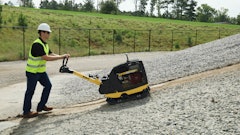
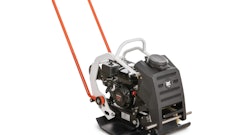



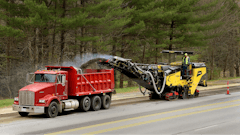

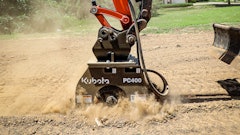
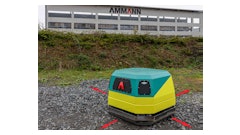

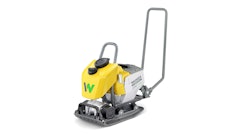
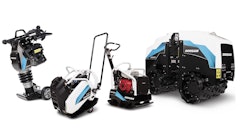
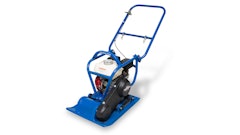
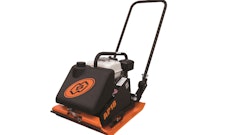
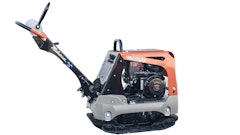
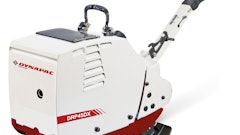
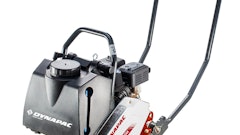
![Weber Mt Action Cf 2 A 5 2019 (quer)[1]](https://img.forconstructionpros.com/files/base/acbm/fcp/image/2019/12/weber_mt_Action_CF_2_A__5_2019___quer__1_.5de809a517450.png?auto=format%2Ccompress&fit=crop&h=135&q=70&rect=0%2C228%2C1920%2C1080&w=240)
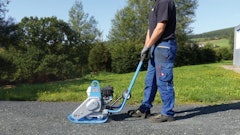
![Weber Cfr 90 (4 2019 Hoch)[1]](https://img.forconstructionpros.com/files/base/acbm/fcp/image/2019/11/Weber_CFR_90__4_2019___hoch__1_.5dc0a0e49e533.png?auto=format%2Ccompress&fit=crop&h=135&q=70&rect=0%2C47%2C1772%2C1772&w=240)
